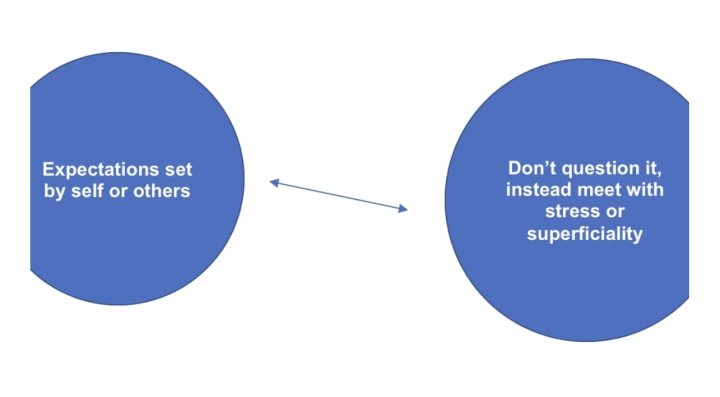
Abstract: This is an attempt to apply a metamemetic approach to ideas. This paper attempts to approaches ideas about evil, utilizing a stable approach that works simultaneously in the personal memeplexes and in external memeplexes. It is a response to the aim of making critical thinking more efficient and training the mind to better recognize the memetic viruses proposed by Richard Dawkins in his book, The Selfish Gene.
Diego Fontanive, who through the End of Fear Project, proposed a way to break down ideas, analyze them, and determine how accurate the elements of our thinking patterns are. By differentiating between memetic and genetic violence, I want to explore various approaches to challenge ideas that progress into ideals as well as explain how this approach works, offering an explanation about how and why we should challenge our personal ideals and memeplex ideals before they become ideologies, then violent and malfunctioning memes.
The approach is about metamemetic thinking and multilogicality. This paper attempts to align exemplified mind maps to Fontanive’s premises and to explore three possible distinctions between situations in which memes are replicated. Each distinction also has an important implication because of the fact that we depend on each other for survival. We are influenced by our own ideas as well those of others, creating frameworks of thought. This is not to judge what functionality can arise from a framework, but suggests how to think multilogically around a framework that works against us.
From pre-Socratic to recent philosophies, the need for a stable approach has been initiated to assess what we are observing and study the filters that distort the observed meme. This includes values, fears, beliefs, and other kinds of ideas that may turn into epistemic acceptances (expectations we assume) which can then control our actions. An example of the analysis of our thinking and behavior can be seen more clearly using mind maps.
I am still looking to see similar theories of approaching this, such as qualitative fieldwork, post-constructuralism, epistemology, Socratic method, and systems thinking. For this paper, it is not because of this author’s lack of precise research regarding the variety of theoretical approaches and their critique and elaboration that they are not applied. Since they are supported theories, they may counteract with our thinking patterns in certain ways, in which case they would be sufficient to analyze and challenge our framework of thinking. Multilogical thinking would include these theories.
When drawing the mind map, the aim is to see which patterns arise, where they originate, and how we associate with them. Attention to content may be a distraction from seeing a pattern. We are conditioned in what to think and not how to think, through ways such as apparent conditioning. This suggests the need for the development of high order thinking skills via educational, personal, and sociological education.
There is an object or concept that is intrinsically that object or concept. Then because we have adopted ideas about it, we cannot see the object or concept for what it is. We might not be looking at it correctly, possibly because of how we have been conditioned. To be clear, this suggests confusion, not necessarily being a judgement of morals, which would be an invalid idea from a faulty framework of thinking. An example of using an unstable framework is when commenting on a picture of a boy dressed and posed in Buddhist costume and posture. Our original response may be that it is cute or spiritual without questioning how these biases are formed in our minds.
A question may be, for anyone in religion, whether they chose the religion. Religion is usually indoctrinated, and the particular religion is based on the place a person is born. The meme of religious freedom, for example, can be deconstructed if we question the validity of the premises made. My aim here then is to find a way in which to challenge these premises. We could trace the thoughts from assuming that religious freedom is good to knowing about its indoctrination.
If it is a concept that we observe, maybe we can write thoughts and follow them with arrows that show us how they may be linked (or connected). Sometimes the thoughts are linked so that the pattern repeats. Memes try to find a way to re-establish a pattern, which we can eventually catch for ourselves. For example, if drinking habits are broken by understanding the thoughts that drive the person to depending on alcohol, then that cycle can be broken.
A repetition of thoughts and behaviors might look different but the pattern doesn’t change even with the different types of addiction. (By addiction, I mean something we cannot seem to live without). The consequences may be fatal, such as acting on the desire to be enlightened. This may, put a person in a situation of more dangers than they would have encountered before the situation. There is a meme, this being desire for enlightenment which returns us to the pattern of putting ourselves in portentously dangerous situations.
In the mind maps, we can trace any a link that can be made in the repetition of the pattern. There is something beyond the content of our thoughts to pay attention to. These examples are attempting to explore the underlying patterns and where they are linked and repeated. In that space are the associations between ideas, ideals, emotions, reactions, interpretations and so on which can be reflected upon to eventually study and see when the pattern arises again and why. Since these are memes, we know the real reason why they repeat is just to replicate themselves, not caring about the host.
The purpose of mind mapping is to see the space between thought processes, ideas, emotions, etc. Some of our physical actions do begin with mental actions. If we don't highlight the facts in between a hypothesis and conclusion, those can be confused with opinions we have carried. (such as needing to drink alcohol to get rid of depression or to starve ourselves when we feel we eat too much). The fact is that we are depressed and we try to find a solution. We don’t think about why we felt the need for these solutions. We also don’t know how to respond to the problem, or to identify what it really is.
To break down the links between thoughts, deductive questions, as an example of the multilogical approach, might include: How to approach a situation? Rational vs. Irrational fear (which situation would I put myself in to be afraid? Am I in that situation? Irrational, rational curiosity and jealousy may fit with this pattern of questioning. What is the situation? Is my knowledge accurate?
Here are three possible distinctive categories to organize mind maps:
Personal Ideologies
Mind of the observer thinking about its thinking through filters and unseen biases that cloud up what is being observed. The original image is distorted. Similar to using a projector, if we don’t focus on the source that creates what is seen only on the projection, then we’re disturbed by distracting thoughts.
An abstraction (“splitting”) happens when clinging to an idea rather than being able to see the association with the object or concept we are observing. We refuse to see the thing for what it really is, remaining confused and only having an idea of the observed.
This example was originally for observing a familiar object ,to show that we have had ideas and ideals about it. If we observe something unfamiliar, the ideas we link with it would be vague because we don’t have a reference to identify it.
One possible first question is: what happens next for us when the pattern links into reputation? Do we feel or respond differently if we turn away from repetition?
[See the first mind map below].
This is something that I think most of us, more or less, can relate to. Ideas make justifications, or convince us in some way, into maintaining ideas about something.
To proceed with memetic violence, this is an example of not knowing how to work with ideas. We look for answers likely from the gurus of the internet, in which we enter the themes.
This graph shows that we may respond in the same way every time we are faced with a particular object or concept and not know how to react otherwise. Take a crisis in the news, for example; the way you narrate is, we don’t know how to assess the situation and respond to it.
[See the second mind map below].
If we cannot reason about why we feel a certain way, we think we must find a reason. If we don’t feel a certain way that everyone else does, we feel ashamed and possibly try and compensate for it in certain ways, with results that are dangerous. The examples range from school shootings to internment camps, or other memetically influenced violence.
Our ideas about ‘evil’, if this can be intersected, stem from confusing memetic and genetic evolution. Genetic evolution is intended for survival purposes and doesn’t associate with entertainment value. Ideas and emotions can be forced together for superficial pleasure or satisfaction. If an ideology is successfully replicated, it remains in the memeplex. We fear losing our ideas and replacing clear, independent thinking, which increases the longevity of memes.
[See the third map below]
Ideas and Ideals Between People
- First circle = coming up with an argument
- Second circle = ideas arrive at a conclusion/whether or not valid
- Third circle = conclusion
In the situation where we share ideas, we have:
- Our ideas about ourselves
- How we want others to see us
- Ideas about relationships
- Their ideas about themselves
- Their ideas about how want us see them
- Their ideas of relationship
When passive beliefs become extreme, there are more problems that arise. When refusing to be responsible in our thinking patterns, violence formulates, putting blame/responsibility onto someone else, such as with people who don’t want to admit their guilt. This is a responsible for each individual analysis. Following, the memes depends on needs such as belonging and confidence if we looked, for example at Maslow’s hierarchy of needs. The belief in certain things we mutually support or justify as normal, for example, is violent rather than the need to belong and shame ourselves for actions afterwards. Constant indoctrination from different people who in turn want supporters/followers leads to violence and can be described as mental masochism. These examples are why we should study our own thinking to help stabilize reactions and associations.
To exemplify the association between memeplexes, let’s take a situation where the leaders are not being challenged and not challenging themselves. If neither the leader or the followers are challenging themselves then violence is likely inevitable. When the justifications for the memes to survive have consequences, those consequences are ignored. There is responsibility on either side and theory of governmentality suggests, being that the people and the leader mutually agree to support each other (and memeplexes are supported also) even if the meme survives because of such violent ways as instilling fear and propaganda. The result is confusion, which is unnecessary as there is an abundance of confusion without memetic violence.
Confusing our ideas about violence is an example of why we should understand and study how memes work in education and personal development. The point is not to erase violence as we are naturally wired to be. The biological reason for violence is survival, self and family, pack preservation of species. The memetic aspect of violence is different. Other animals don’t develop violence out of ideologies. For practical reasons, they hunt, protect offspring, territory, war survive. We are violent in other ways. We don’t need to hunt anymore, live in caves or defend ourselves against predators.
We can’t fight against thousands of years of evolution. Same brains, different minds. Irrational violence comes from memetic evolution. This is why we have racism, bullying, discrimination, racism, an outcome of the problem. We associate negative meaning to identify and distinguish what appears to be different and meaning takes over rational thinking. By critiquing my belief from a memetic and multilogical perspective, I understand you critique my belief, not me. Beliefs don’t have a mind or life. So should participate in a discussion with no violence. Can we talk about Islam without being killed? Offend ideas, not people. Natural violence is different from memetic. The rhetorical, moralistic, sphericalness, should be studied along with the memetic perspectives on violence.
Ideas Between Person and Memeplex
When an individual is brainwashed, they don’t know another way to think. Then they feel the need to become the memeplex they are influenced by. Not all of our emotions and violence comes from our own thinking. It is influenced by a memeplex, that in an extreme and dysfunctional sense, indoctrinated them to act and believe in a certain way.
This category seems hard to extract any kind of a multilogical example. Perhaps Sartre or someone who would develop psychological security when the memeplex around them intends to invade that security. And that may be a note is that we join a memeplex for belonging or security, but we are mutually obliged to follow something about the ideology in the memeplex.
[See the fourth map below].
The last mindmaps, done by Diego, portray a comparison between monological thinking and multilogical thinking ways to analyze the validity and invalidity of each premise behind ideas.
In conclusion, the mind maps act like a microscope, laying out parts of our thinking processes. We study how we associate with each part. Each premise in an argument can be valid or invalid. Over time and with practice, this can become easier so as to properly address what could be a dysfunctional spreading of memes utilizing the approach proposed by Diego in metamemetics and multilogicality.










Comments
There are no comments for this story
Be the first to respond and start the conversation.